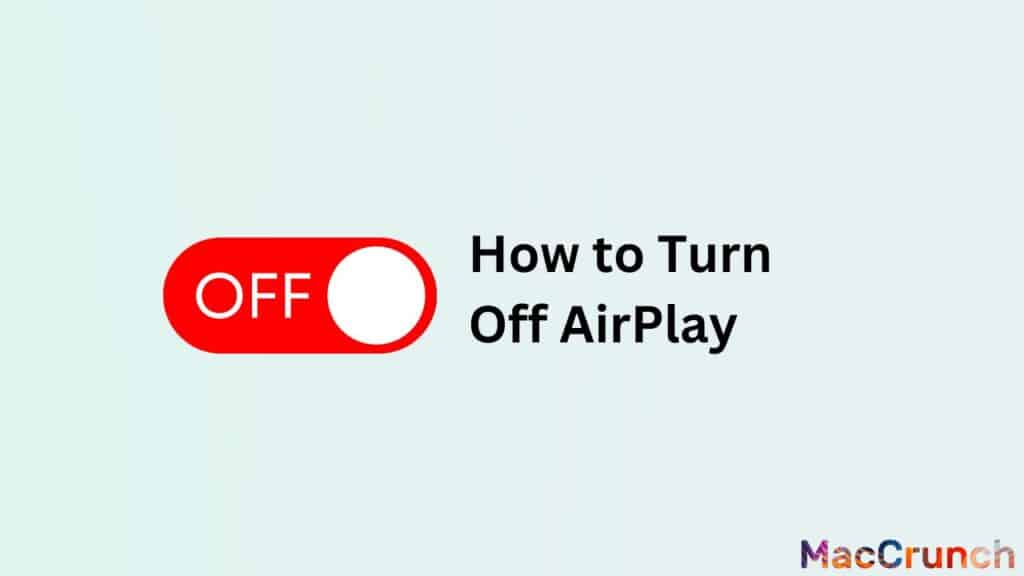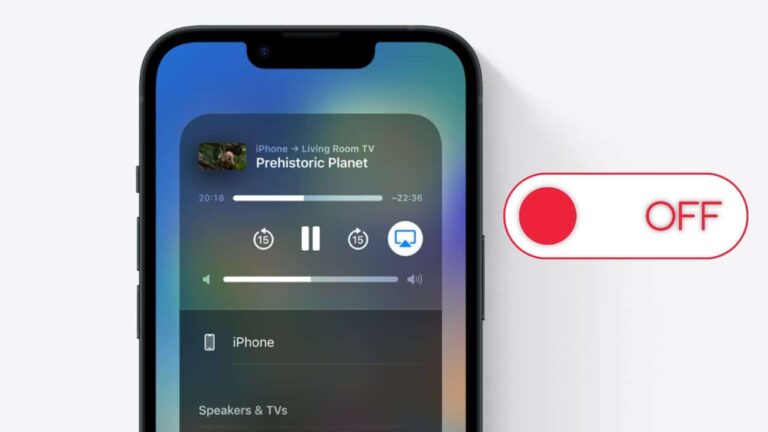Apple Inc. created the exclusive wireless streaming technology known as AirPlay. Users can broadcast audio, video, and other multimedia content from one Apple device to another with the help of AirPlay, for example, from an iPhone to an Apple TV. Without the use of cables or wires, AirPlay enables you to watch your favorite material on a bigger screen and with better sound.
Several Apple products, including the iPhone, iPad, iPod touch, Mac, and Apple TV, support AirPlay. Moreover, certain speakers and receivers from other brands also support AirPlay.
It is crucial to regulate AirPlay consumption for a number of reasons. First of all, wireless content streaming raises privacy issues because it may be intercepted by unauthorized individuals. Second, wirelessly streaming a lot of data can use a lot of bandwidth, which might impair the operation of other devices on the same network.
Table of Contents
A Guide to Understanding AirPlay Settings

You can broadcast audio, video, and other content between Apple devices using the exclusive AirPlay protocol. You require both a source device (such as an iPhone, iPad, or Mac) and a destination device in order to use AirPlay (such as an Apple TV or AirPlay-enabled speaker).
Different Devices
Depending on the type of device you are using, different locations may have different AirPlay settings. The locations of the AirPlay settings on various Apple devices are listed below:
- iPhone and iPad: From the Control Center on iOS devices, you can access the AirPlay settings. To view a list of possible AirPlay targets, hit the AirPlay icon after opening the Control Center by simply swiping up from the bottom of the screen.
- Mac: The menu bar on Macs provides access to the AirPlay settings. Choose your intended target device from the list after clicking the AirPlay icon in the menu bar (it looks like a triangle with a dotted line around it).
- Apple TV: On Apple TV, the main menu is where you can find the AirPlay settings. Turn on AirPlay and choose your target device by going to Settings > AirPlay and Home Sharing.
OS Versions
Depending on the OS version you are using, the placement of the AirPlay settings may also change. The locations of the AirPlay settings on various OS versions are listed below:
- iOS 11 or earlier: The Control Center in iOS 11 or prior allows you to view the AirPlay settings. To view a list of possible AirPlay targets, hit the AirPlay icon after opening the Control Center by simply swiping up from the bottom of the screen.
- iOS 12 or later: On iOS 12 and later, the Control Center now houses the AirPlay settings. Swipe down from the top-right corner of the screen to see the Control Center, then press the AirPlay symbol to view a list of possible AirPlay targets to access the AirPlay settings.
- macOS 10.15 or earlier: With macOS 10.15 and earlier, you can open the menu bar to view the AirPlay settings. Choose your intended target device from the list after clicking the AirPlay icon in the menu bar (it looks like a triangle with a dotted line around it).
- macOS 11 or later: With macOS 11 and later, the menu bar now contains the AirPlay settings. Choose your intended target device from the list after clicking the AirPlay icon in the menu bar (it looks like a triangle with a dotted line around it).
Turning AirPlay On and Off
Depending on the kind of device you are using, you may have different options for turning AirPlay on and off. The steps for using the settings on various Apple devices are broken down as follows:
- iPhone and iPad: From the Control Center on iOS devices, you can turn AirPlay on and off. To view a list of possible AirPlay targets, hit the AirPlay icon after opening the Control Center by simply swiping up from the bottom of the screen. By choosing your destination device, you may then toggle AirPlay on or off from that point.
- Mac: The menu bar is where Mac users may switch AirPlay on and off. Choose your target device by clicking the AirPlay icon (a triangle with a dotted line around it) in the menu bar.
How to Turn Off AirPlay on Various Devices

You might wish to disable AirPlay at times, whether it is to save battery life or just because you do not need it right now. This article will describe how to disable AirPlay on several devices, including the iPhone, iPad, Mac, and Apple TV (all of which run iOS) (running tvOS).
Turning Off AirPlay on iPhone and iPad (iOS)
- Access Control Center: On an iPhone or iPad running iOS, you must access the Control Center to switch off AirPlay. To access the Control Center, slide up from the bottom of the screen.
- Select Screen Mirroring: Choose Screen Mirroring by finding the icon for it in the Control Center, which resembles two overlapping rectangles. To access the Screen Mirroring section, tap on it.
- Tap “Stop Mirroring”: If your iPhone or iPad is currently connected to an AirPlay-capable device, you will see the name of that device mentioned when you tap “Stop Mirroring”. Just tap “Stop Mirroring” to end the AirPlay connection.
Disabling AirPlay on a Mac (macOS)
- Click on AirPlay icon in the menu bar: Click the AirPlay icon in the menu bar to switch off AirPlay on a Mac running macOS. A rectangle with a triangle pointing up serves as the AirPlay icon.
- Select “Turn AirPlay Off”: After clicking on the AirPlay icon, a list of compatible AirPlay devices will appear; choose “Switch AirPlay Off” from this list. A checkmark will appear next to the name of each of these devices if your Mac is currently connected to it. Simply choose “Turn AirPlay Off” from the drop-down menu to disable AirPlay.
Turning Off AirPlay on Apple TV (tvOS)
- Go to Settings: On an Apple TV running tvOS, you must go to the Settings app to disable AirPlay. On your Apple TV’s home screen, select the Settings icon to access this feature.
- Select AirPlay and HomeKit: AirPlay and HomeKit can be chosen in the Settings app by selecting “AirPlay and HomeKit”. You will then be directed to the HomeKit and AirPlay settings.
- Toggle off AirPlay: Turn off AirPlay by looking for the “AirPlay” toggle in the HomeKit and AirPlay settings. To turn off AirPlay, simply toggle it to the off position if it is currently on.
Troubleshooting Common Issues

Like with any technology, there could be moments when AirPlay gives you problems. Let us talk about two typical problems that you could have with AirPlay and how to fix them.
AirPlay Not Turning Off
- Restarting Devices: Restarting the devices in question is one of the quickest and most efficient ways to fix problems with AirPlay. This can assist in resetting the connection and resolving any transient problems that might be the root of the issue. Simply switch your gadgets back on after turning them off to restart them.
- Software Updates: Outdated software is another frequent reason for problems with AirPlay. You need to check for updates and install any that are available if you want to make sure that your devices are using the most recent software. Go to “General” > “Software Update” in the “Settings” app on an Apple device to check for software upgrades.
AirPlay Icon Missing
- Checking System Requirements: Your devices must meet specific system requirements in order to use AirPlay. Your devices must be running the most recent version of iOS or macOS, for instance. Visit the Apple website and scroll down to the “AirPlay” section to view the system requirements for AirPlay.
- Ensuring Wi-Fi Connection: For AirPlay to work effectively, a strong and reliable Wi-Fi connection is necessary. A shaky or inconsistent Wi-Fi connection may be the cause of the absence of the AirPlay icon. You should assess the Wi-Fi signal’s strength and confirm that all of your devices are linked to the same Wi-Fi network in order to resolve this problem. To strengthen the Wi-Fi connection, you might need to restart your Wi-Fi router or move nearer to it.
Conclusion
The procedure of turning off AirPlay is quick and easy, and it only takes a few seconds. You may quickly turn off AirPlay on your device and stop sharing your audio or video content with other nearby AirPlay-enabled devices by following the instructions in this article. Turning off AirPlay is an easy and simple fix whether you want to save battery life or keep your media private. Hence, if you want to disable AirPlay, just follow these instructions, and you will be done in no time.
Frequently Asked Questions (FAQs)
How to turn off AirPlay on their devices has been a point of confusion for many of our readers. In response to your inquiries, we have put together the information below to help you through the process of disabling AirPlay.
How to disable AirPlay permanently?
Depending on the device you are using, different procedures will need to be taken in order to permanently disable AirPlay. The directions for a few well-known gadgets are as follows:
- Turn off the toggle for AirPlay on an iOS device by going to the “Control Center,” selecting “Screen Mirroring,” and then tapping.
- Uncheck the box next to “Show mirroring options in the menu bar when available” in the “System Preferences” window on a Mac.
- Turn off the option for “Enable AirPlay” on an Apple TV by going to “Settings,” choosing “AirPlay & HomeKit,” and then clicking on it.
How to restrict access to AirPlay?
You can limit the number of devices that can use AirPlay or disable AirPlay on particular devices to restrict access to AirPlay. The steps are as follows:
- Go to “Settings”, choose “Control Center”, then press “Customize Controls” on an iOS device. You can take the AirPlay control out from here.
- Uncheck the “Screen Sharing” box in the “Sharing” section of the “System Preferences” menu on a Mac.
- Turn off the toggle for “Allow Visitors” on an Apple TV by going to “Settings,” choosing “AirPlay & HomeKit,” and then clicking on it.
How to secure your AirPlay connection?
You can use a passcode to lock your AirPlay connection and stop unauthorized access. The steps are as follows:
- Go to “Settings”, choose “Control Center”, then press “Customize Controls” on an iOS device. The “Screen Recording” control can be added from this point on.
- On a Mac, select “System Preferences,” then “Displays,” and then “Require password.” Check the option.
- Turn on the toggle switch for “Require Code” in the “AirPlay & HomeKit” section of the “Settings” menu on an Apple TV.

